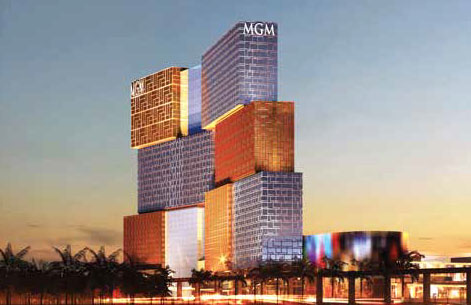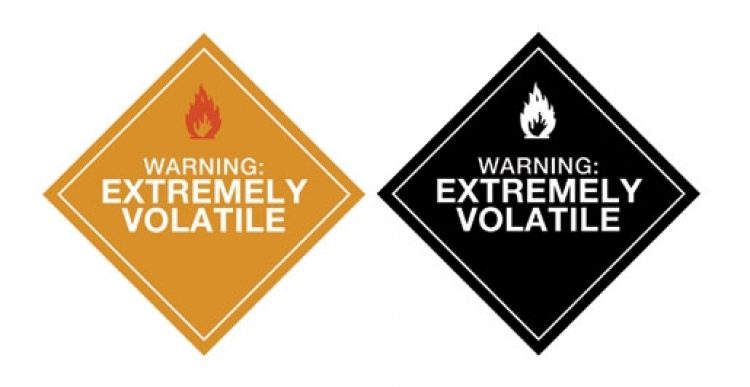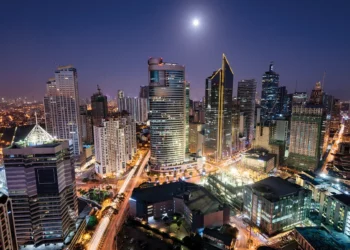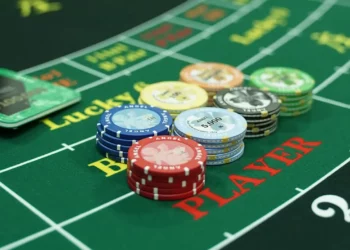Macau gaming stocks have performed strongly over the past few months, and international investor interest in the sector continues to grow. While the stocks now benefit from much greater liquidity, their prices are still regularly moved by headline news which often has little correlation to their fundamentals. J.P. Morgan Leisure and Gaming analyst Kenneth Fong discusses the key factors to consider in forecasting where the sector is headed and the challenges in valuing the stocks
Although Macau’s official gaming figures are only released on a monthly basis, unofficial leaks of weekly revenue and market share data are widely disseminated and commented upon. The trouble with this is that while casino games favor the house in the long run, there can be a great deal of volatility in the short run, and so the ability of Macau gaming data to reliably indicate trends diminishes greatly as the measurement period narrows.
Given the increasing interest in Macau gaming stocks, demand for analyst commentary on the data is also on the rise. This can sometimes lead to misinformed knee-jerk pronouncements from afar. On more than one occasion we’ve heard prominent gaming analysts express concern that Macau casino revenue during Chinese New Year wasn’t performing as expected. While Chinese New Year often sees floods of high-rolling Chinese players descend on US casinos, Macau VIPs—who generate close to 70% of the market’s total revenue—tend to avoid the crowds of mass-market visitors who come to the city during the period.
More recently, the alarm was raised when the tentative recovery in the growth of Macau’s VIP revenue since the beginning of 2013 appeared to falter in the third week of April. Reaching for an explanation, one US-based analyst concluded the slowdown was likely related to players putting off their Macau trips until the weeklong mainland Chinese holiday to mark Labor Day on 1st May. Hong Kong-based Kenneth Fong, meanwhile, talked to Macau’s junket operators and revealed in a note that the real cause of the dip appeared to be volatility in luck, with VIP win rate for the week “below normal at around 2.7%-2.75%”. The market-wide VIP win rate for the first quarter of 2013 had stood at 3.28%
Mr Fong is a member of J.P. Morgan’s Asia Conglomerate, Gaming & Lodging Team with a special focus on Macau Gaming and Lodging names, and his insights benefit from proximity to and regular contact with Macau casino operators and junkets as well as familiarity with the habits and preferences of local players.
Inside Asian Gaming spoke to Mr Fong about the major factors driving the sector and what investors need to look out for.
IAG: What are the key economic indicators in mainland China you look at in gauging demand for Macau casino operators?
Mr Fong: On the VIP side we normally look at the loan growth, the monetary growth, as well as the amount of Social Financing [Total Social Financing is a term coined by China’s central bank to monitor aggregate financing apart from yuan bank loans. It contains six other categories: foreign-currency loans, entrusted loans, trust loans, bankers’ acceptance bills, corporate bonds and non-financial stock sales].
These are some of the macro liquidity indicators we normally look at because they directly affect how much money VIP players can get from their businesses. If they are tight on credit, and their money is tied up in their businesses, they don’t have surplus money to gamble. So if it’s easy to get money either from bank loans or Social Financing, their liquidity is eased, then they have more money they can spend in Macau.
There are a couple of other macro indicators. We also look at the Guangdong export data because, after all, a big part of the business comes from Guangdong province.
Although Macau gaming revenue is highly correlated to liquidity and export and manufacturing output in China, is that mostly relevant to the VIP sector, while the mass market is less dependent on these macro factors?
The difference between VIP and mass is the relative rates of penetration. VIP is more penetrated. If you have supply and demand balance, and macroeconomic conditions adversely impact VIP players, you will see the sector immediately slow down, because the supply and demand match.
But for mass it’s different. Mass is underpenetrated. Many more mass players want to come than those who already came to Macau. Even though the same customers’ spending will slow down, the increase in penetration will offset the slowdown. So today I may have 10 customers coming in here. They spend, let’s say, $100 each. Tomorrow they may spend less, it’s down to $95, but you have an additional three to five more players come in because of improved infrastructure which allows increased penetration. The increase in new players will be more than enough to offset the decline in existing players’ spending.
That’s why even though we saw an economic slowdown in China last year, still the mass market registered 30% growth. It’s in part because of the increase in penetration.
Not only is the mass market growing, but we seem to be moving up in the mass market, with minimum bets on tables having risen considerably in recent months.
It’s a function of two things. One is we have more players coming in, it translates into more demand. And there’s a limited amount of gaming tables, so casinos can increase the pricing.
The other thing is a lot of investors think mass-market growth is purely a function of higher table limits, but they are only seeing part of the picture. It is actually also the result of the customer-segmentation efforts of the casino operators.
Most of the major casinos today have been around since 2007. Like Venetian, MGM, Grand Lisboa and Altira. When they first opened, they did not have such a clear idea of who their customers were or what they wanted. Back then the mass gaming floors in Macau were pretty unstructured, with a big mass floor, maybe a little bit of high-limit area, and that’s it. And back then the VIP was so strong that everyone was focused on VIP. They were relatively easier to serve. Give them credit and commission, the players will come.
Not until 2011 and 2012, when the VIP sector started slowing down, did operators start paying more attention to their mass-market business, which was still growing strongly. They started looking at how they could improve yields. Over the past couple of years they have accumulated a customer data base and gained knowledge of what the customers want and their preferences.
The operators saw there was still room to get more yield from their mass-market customers. One of the ways to do that was to segment them. Like airlines, in the past they only had economy, now they have economy, premium economy, business class and first class. It’s the same thing for the casino floor, where you have the pure electronic tables, the stadium ETGs with a live dealer, the regular tables, the high-limit and the premium mass. So by segmenting the customer you actually improve the yield on a per customer basis.
You’ll notice nobody really talked about premium mass two years ago—not analysts and not even the casino operators. It was only last year that everybody started talking about premium mass as a result of slowing VIP, the table cap and the shortage of dealers. So casinos needed to think of clever ways to get higher yields on a per customer basis and started to look for good ways to segment customers.
Are the margins on premium mass higher than on the regular mass? How do the costs break down in the mass segment?
It depends on how much the casinos spend in reinvesting back to the customer. If a customer loses $100, if it is grind mass, $40 goes to the government as tax, and approximately $15 to salary and overhead expenses, $5 is the reinvestment such as lucky draw promotions, different offers, hotel points, etc., and the remaining $35-$40 will be the margin.

J.P. Morgan Leisure and Gaming analyst Kenneth Fong
The labor cost as a proportion of revenue must go down in the premium mass compared to grind mass?
Yes, but reinvestment also goes up. So, effectively, in premium mass, operators use what they get from the efficiency enhancement from the players gambling more, and they invest a little bit back to them, and also keep a little bit more. At the low end of the mass, 3%-5% of revenue goes to player reinvestment, and at the high end about 15%. The operators give most of their premium-mass players hotel, buffet vouchers and ferry tickets, etc.
The big news since the beginning of 2013 has been the pickup in the VIP sector. Is VIP back in solid growth mode?
It is too early to say how sustainable it is, because inherently this segment is pretty volatile, and it all depends on how the macro economy trends. The junket operators say the customers seem to be gradually coming back. I think, in part, because of the more stabilized political environment in China, the VIP players have become more confident about the economic and political outlook and have resumed their normal activities.
What about the claim that Macau casinos are widely used to launder money and transfer funds out of mainland China? How can you measure that?
From talking to junket operators, I think there are much easier and more costeffective ways to get money out of China rather than through the gaming tables. Because on the gaming tables you have a chance to lose, and the transaction costs can be pretty high.
How about capacity in Macau, especially in light of the table cap allowing 3% growth in annual supply of live tables until the end of the decade? Is capacity going to be increasingly a limiting factor for Macau casinos?
Near term, I don’t think capacity will be a constraint, especially at Sands China for example, which has so much capacity. There’s still capacity that needs to be absorbed.
It’s not like the situation in 2004 or 2005 when Macau was pretty much at full capacity?
No. And the other thing is to look at the number of visitors per day per table. Back in 2002 there were more than 90 visitors per day per table. Now it is only 20-something. So they are not really that crowded. Which means that capacity can continue to be utilized.
So the capacity should be able to carry Macau until the next wave of Cotai properties start coming online from mid-2015?
I think so.
How will Cotai shape up as the new properties start openings there? Will there be an increasing dichotomy between players on Cotai and on the peninsula?
I would say Cotai players would be relatively more tourist-like, more family-oriented. And on the peninsula there could be some high-end as well as more hard-core gamblers. The hardcore gamblers still prefer the peninsula relatively. The atmosphere there is better for them, and the casinos are more densely located—it is convenient to travel across casinos. For a hard-core gambler, the most important thing is whether they win or not as opposed to whether the casino is nice. When these gamblers are losing at one casino they want to move over to another one. On Cotai, the casinos lack connectivity, whereas on the peninsula they are closely connected, so that’s why I think hard-core gamblers still like to play on the peninsula.

Upcoming addition to the Cotai landscape- rendering of MGM China Holding’ planned Cotai resort
When will Cotai achieve critical mass?
Probably 2017, after all the other operators have gradually opened there. Then you’ll have more iconic products there to attract customers.
Right now, people are still focused on the inside of the casinos there and not the outside. You only have Venetian, Sands Cotai Central and City of Dreams and to a certain extent Galaxy on the other side. But if you go to Vegas, the beauty is also on the outside. You walk along the Strip taking pictures, you see all these different buildings and designs. You need this factor as well to attract customers. You will need a few more properties over there which carry different designs to complete the landscape.

Critical mass under construction-the Cotai Strip
A lot of the visitors to the Cotai properties are tourists and leisure visitors who aren’t as interested in gambling as the hard-core players on the peninsula. Are these leisure visitors actually valuable to the casinos?
They are good and bad. If tourists come in, even though they are mainly there to take pictures, they could also gamble a little bit, but will not sign up for the casino’s loyalty card. They just come in, throw chips on the table, lose and go. The casino has no reinvestment cost and doesn’t need to provide hotel service or food vouchers for them. By contrast, the hard-core gamblers sign up with the loyalty programs, accumulate points, redeem hotel rooms, etc.
How will the peninsula casinos hold up beyond the next wave of Cotai development?
They will grow slower than the overall market because if you are a hard-core gambler you are already coming to Macau. The new customers to Macau over the coming years are likely to be more leisure entertainment or new players, and they will be more attracted to Cotai. So the growth of the peninsula relative to Cotai will be slower, but I believe the peninsula casinos will still grow.
And some people definitely seem to prefer the more raucous, down-anddirty atmosphere at the older casinos.
It’s their comfort zone. They feel this is the way to gamble—yelling and pounding the tables. They are more relaxed.
What are your thoughts on the other markets in the region? How about Solaire in Manila, which opened in March? It seems to have got off to a slow start.
It is gradually ramping up. It will take some time normally for a new casino to ramp up, especially when the product is relatively high-end, it also needs some time to gain customer recognition. And the Manila Bay area is relatively undeveloped. Again, critical mass is important, and when all the other casinos gradually open up, you’ll get it there.
How about Singapore?
In Singapore the mass segment will not enjoy the similar growth story as Macau. I think for Singapore it will be more like single-digit growth in the mass market. And in terms of VIP, the problem in Singapore is they don’t have junkets, so the casinos need to extend credit to the players. The players come from different regions, you have different jurisdictions, and that may be a problem for debt collection.
So there is some credit risk involved in the Singapore VIP market which makes it hard for it to grow as big as Macau’s VIP sector, because in Macau you have all the agents doing the debt extension and collection.
Macau will continue to dominate the Asia market. In part because it’s right next to China, and because it’s already built critical mass with 35 casinos densely located in a very small place. It’s hard for the others to replicate that quickly, so this is a clever strategy on the part of the Macau government—building up critical mass in a short period of time. That critical mass creates a natural barrier to entry.
What are the challenges in valuing Macau gaming stocks?
One is from the driver point of view. The VIP market is inherently very volatile, so it’s not easy to forecast an exact number. As an investor I pay for the cash flow stream of a business over the next 10, 20 years. If the revenue is inherently volatile, how can I have an assurance of what kind of cash flow I can get and what kind of multiple I should get on this income?
The other consideration is that in the medium term, in 2020-2022, the licenses of Macau’s casino operators will be expiring. We are likely to get more clarity on how the licenses will be renewed closer to the expiry date. As we move closer to the license renewals, investors will focus more on whether there’s a risk factor there.
Even though it’s highly unlikely any of the operators will fail to have their licenses renewed?
But still there is uncertainty. So you need to put a discount for the license renewal risk.
Do you think Macau gaming stocks are undervalued in relation to comparable sectors, such as consumer goods?
I would say so. The consumer names in China are trading at 20-something times price to earnings while Macau stocks are trading at mid-teens PE while giving you a 4%-5% dividend yield. I think that’s in part because of the uncertainty over the VIP segment, so investors put a valuation discount on Macau names compared to the consumer names.
Is it also related to perceptions of how the sector is operated?
Yes, that is also true. It is not as simple compared to consumer stocks, and you have a bigger component of policy risk involved as well. And there’s a lot more noise about anti-corruption drives, illicit money transfers. So I think inherently it will make investors feel less comfortable to put a high multiple on the stocks.
But as time goes on and the sector gets bigger and investors become more comfortable with it, would the multiples then perhaps converge with those of the consumer names?
I would say so. The multiple should gradually converge closer to the consumer names. The sector-average PE is gradually expanding as well.
What are the major downside risks to the sector?
The volatility of the VIP sector. There’s always a lot of headline news about crackdowns on junkets, officials being detained in China. These things will scare investors.
But it seems like all the bad news over the last two years has had very little impact on actual revenue.
It’s more noise than actual impact, yes. But it will create uncertainty. Because, like you said, it’s the inherent nature of the business, how it’s operated, it’s always natural for people to associate the two things together. So when investors see this negative news-flow, even though they know that it may not be true, they don’t want to take the risk. Sell first and find out later.
Is one of the problems that the investment community perhaps views the sector more simply than they should? They’re too focused on the headline revenue or growth numbers and not enough on EBITDA and margins and the mass story that’s been going on in the past year?
Yes. But there are so many sectors now in Hong Kong and so many things going on that I think it would be natural for investors to focus more on the top line and headline growth. It’s easier to understand. If growth goes up, then they can assume sector fundamentals are strong. If it slows down, there will be some concerns. You won’t know EBITDA until the companies announce their quarterly results, so each year you only have four times to find out the profit trend. But every month or even every week you know how the headline revenue is growing. In the short-term the sector will react to the headline. In the medium-term it’s all related to the cash flow and earnings of the companies.
So in a way all the short-term noise could offer a lot of potential opportunities for a savvy investor?
Yes, opportunities for the investor who really knows how the sector operates.





























